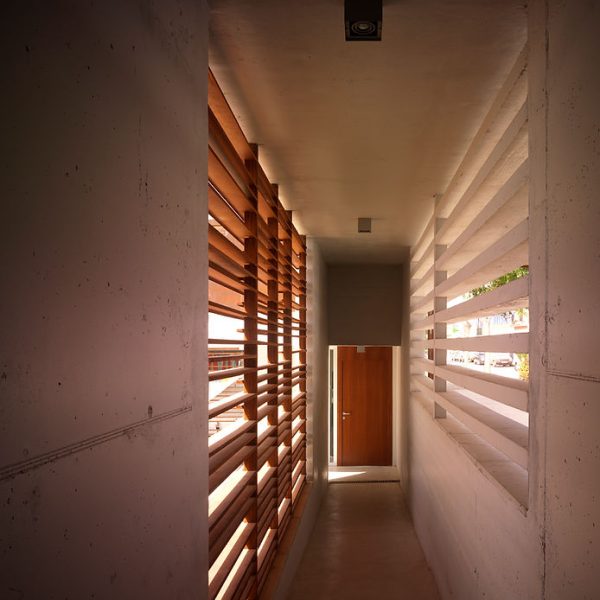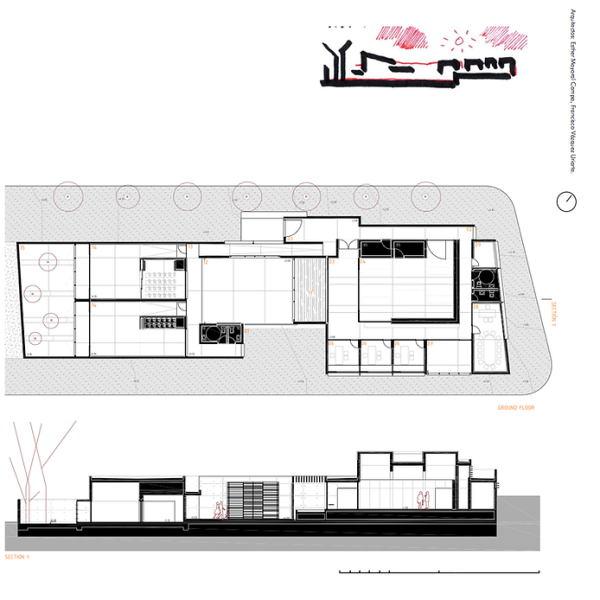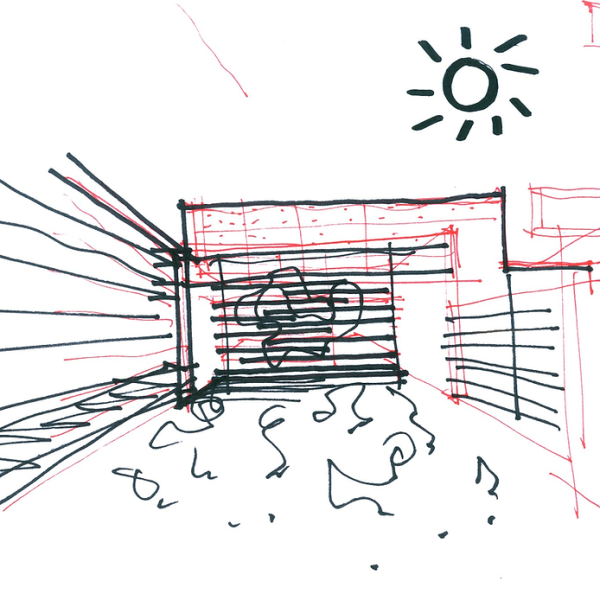Centro de Servicios Sociales Comunitarios
C/Naturaleza,s/n. Santiponce. Sevilla, 2007.
Promoters: City Council of Santiponce
Construction company: Antonio D.
Budget: 190.637 euros
Architects: Giudecca Arquitectos + Francisco Vázquez Uriarte.
The Community Social Services Center is a building located in a privileged area of Santiponce. Its location between the historical centre and the new and consolidated areas of expansion, as well as its elevated topographical position, gives the building excellent accessibility from three streets and privileged views over the town.
he building has a dual structure, conditioned by the program. The first area, the highest one accessible from the upper street, is where the most assistance program is organized, with the offices of the social workers, storage spaces and a multipurpose room. The lower area, accessible from Calle Naturaleza, is dedicated to training workshops. Both areas can operate independently, without establishing relationships or simultaneously, allowing for enormous functional flexibility throughout the building.
The building is a highly porous concrete structure, which is perforated allowing the light, air and views to pass through the building, as if it were a filter that houses the programme and the users.
An open courtyard acts as an articulating element between the two zones of the project, this courtyard has an integrating function, but at the same time constructs the limit between the different spaces of the building and the street, it is an inclusive place that can be incorporated as a square into the public life of the town.
The project seeks to blur the limits between the open and the closed, constantly proposing hybrid spaces that act as a hinge or threshold between the exterior and the interior, encouraging the connection between spaces with open galleries.
The longitudinal section is what gives unity to this double building, and what allows a sequence of complex sections to be visually recorded, enriched by a work with light that seeks to make the passage of time visible, the seasonal changes, in short, it seeks to introduce a phenomenological time into the interior of the building that will act as an architectural therapy for the fragile lives of its users.


















